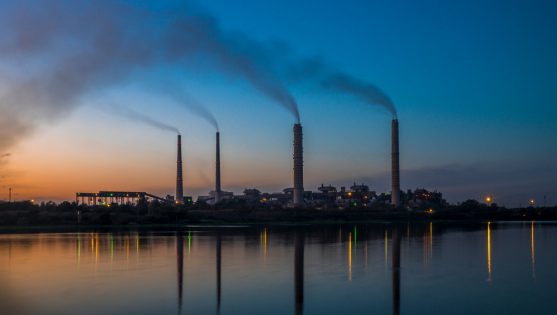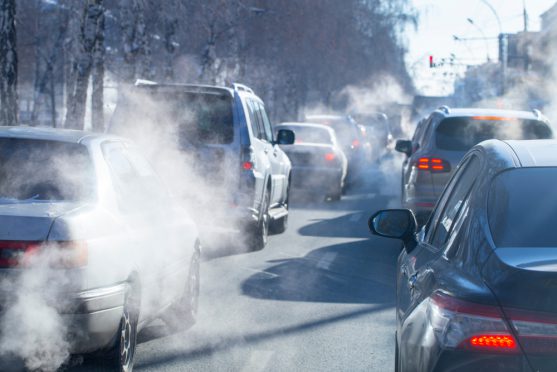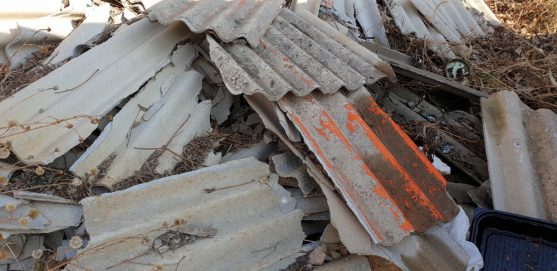We all know that tobacco can cause cancer. What most of us don’t know is that on a daily basis we come across many other substances that can also cause cancer or increase the risk of certain cancer.
It is important that we educate ourselves about these cancer causing substances and the steps that should be taken to prevent exposure to these.

Air pollution is a carcinogen
What are carcinogens?
A carcinogen is any substance that can cause cancer in humans. This substance can interact with our cell’s DNA and cause genetic mutations that can lead to cancer.
Carcinogens can occur naturally, like aflatoxin (produced by a fungus), or can be manmade, like tobacco or asbestos.
Certain carcinogens have been associated with specific types of cancers. For example, exposure to asbestos in industrial settings, is strongly associated with a specific lung cancer known as mesothelioma.
Identifying carcinogens can help us take specific measures to reduce exposure and decrease the occurrence of specific types of cancers.
Carcinogens do not necessarily cause cancer in all individuals who have been exposed to them. There are many factors that influence the development of cancer, including the individual’s genetic composition, and the amount and duration of the exposure.
How do carcinogens cause cancer?
Cancer is caused due to changes in the DNA (mutation) of a cell. These changes can be inherited or may be induced by various factors outside the body, which are usually known as environmental factors.
The environmental factors include several types of exposures; like:
- Naturally occurring exposures (infectious agents, ultraviolet light, radon gas, etc.)
- Lifestyle factors (smoking tobacco, consuming alcohol, etc.)
- Workplace or household exposures (certain industrial chemicals)
- Pollution
Each carcinogen has a different level of potential to cause cancer. Some can raise the cancer risk after only a short period of exposure, while others may need a longer time.
What are the main types of carcinogens?
Carcinogens are classified into three categories:
Physical carcinogens
These include ultraviolet and ionizing radiation, particulate matter, fibres etc. These agents can cause cancer through various pathways; they can also act on genetic and environmental factors that can lead to cancer.
For example, the carcinogenic potential of asbestos is enhanced when combined with exposure to cigarette smoke.
Chemical carcinogens
These include arsenic, aflatoxin, tobacco, alcohol, etc. The chemicals either directly interact with DNA or undergo variations before damaging the DNA.
Biological carcinogens
Organisms, such as bacteria, viruses or certain parasites can also cause cancer. Some of these organisms include Human papilloma virus, Epstein Barr virus, Hepatitis B virus, etc.
What are the carcinogens around me?
Some of the common carcinogens and ways to avoid them have been discussed below.
Tobacco smoke

Tobacco smoke contains about 70 chemicals that are known to be carcinogenic, including, N-nitrosamines, aromatic amines, polycyclic aromatic hydrocarbons, acetaldehyde, isoprene, etc.
These chemicals are directly inhaled into the lungs, from where they can reach the bloodstream and other parts of the body.
About 80% of lung cancer deaths are thought to result from smoking.
Not only does smoking increase the risk for lung cancer, but it can also cause cancers in the mouth, pharynx, larynx, etc. The best way to avoid tobacco smoke is to quit smoking. Also avoid being around others while they are smoking.
You can read more about the link between smoking and cancer here.
Tobacco chewing

Most people believe chewing tobacco is safer than tobacco smoke, as it is not linked with lung cancer. Let’s get it clear, no tobacco products are safe, they can just be less lethal.
Chewing tobacco is one of the common types of smokeless tobacco. People who chew tobacco are exposed to at least 25 cancer causing chemicals and among them, tobacco-specific nitrosamines (TSNAs) is the most harmful one.
While tobacco chewing is not linked to lung cancer, its users are at a high risk of oral cavity cancers, esophagus, and pancreatic cancers.
Alcohol consumption

Alcohol consumption is one of the preventable risk factors for several cancers.
The exact mechanism of how alcohol consumption leads to cancer is unknown, but some studies state a connection between alcohol use and certain cancers, such as cancers of mouth, throat, larynx, esophagus, liver, breast, colon, and rectum.
In addition to alcohol use, if a person also smokes then the risk of these cancers increase to several times higher than drinking or smoking alone.
This is because alcohol helps the carcinogens present in the tobacco enter easily inside the cells that line the mouth, throat, and esophagus.
Additionally, alcohol reduces the ability of these cells to repair DNA damage caused by carcinogens.
Air pollution

According to the International Agency for Research on Cancer (IARC), outdoor air pollution increases the risk of lung cancer.
Air pollution is a mixture of tiny dust-particles and the chemicals released in the form of fumes from vehicles, factories, and the burning of wood or coal.
The mechanism of how these pollutants cause DNA damage in cells and lead to cancer is unknown.
Indoor air pollution caused by second-hand smoking and burning of solid fuels for cooking at home could also increase the risk of lung cancer.
Intake of processed meat

Research suggests that eating processed meat increases the risk of stomach and colorectal cancer.
Any meat that contains added chemical preservatives or is preserved by using added salt, smoking, or curing is considered processed.
This meat may seem more convenient and affordable, but they form cancer-causing agents and increase the risk of cancer when consumed.
According to some studies, eating 50 grams of processed meat daily increases the risk of colorectal cancer by 18%.
Asbestos

Asbestos is a group of naturally occurring fibrous minerals, which are resistant to heat and corrosion.
Asbestos is used in wallboard materials, insulation and fireproofing materials, and automotive brakes.
If the fibres are released and we breathe them in, they can get caught in our lungs for a long time. Asbestos exposure can cause mesothelioma lung, larynx, and ovarian cancer.
Working in manufacturing units of friction products, insulation, other building materials or textiles, can increase the exposure to asbestos.
The workers must wear protective gear if they are exposed to asbestos. If there is any asbestos containing material in the home, call an expert to remove that material.
Ultraviolet rays

Too much ultraviolet (UV) radiation exposure can damage the genetic material in the skin cells, which can lead to skin cancer overtime.
Climate change and pollution makes the UV rays stronger. UV rays in sunlight can increase the risk of basal cell, squamous cell cancers, and melanoma.
Always use a broad-spectrum sunscreen even when it’s cloudy, wear sun-safe clothing, eyewear and hats.
Did you know?
Not many people know that some cancers are preventable as you can be vaccinated against the viruses that cause them. Read more about cancer causing viruses.

